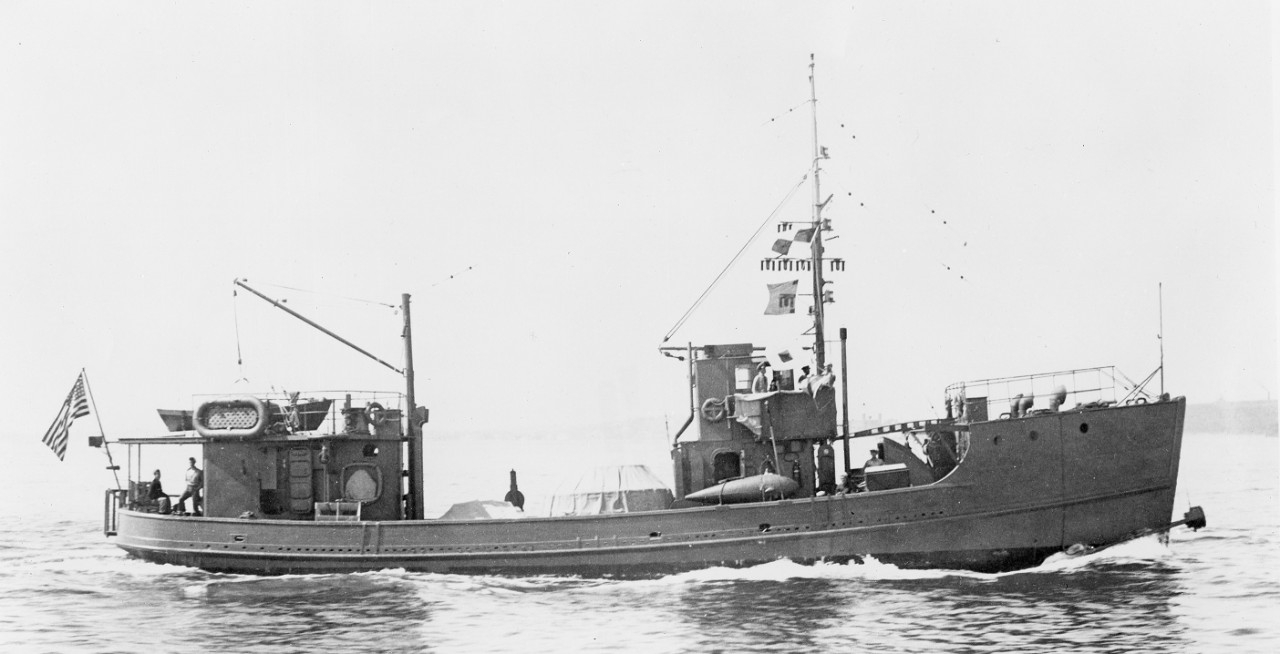Blue Jay (AMc-23)
1941–1943
A bird common to North America, whose plumage is chiefly bright blue.
(AMc-23: displacement 185; length 93'4"; beam 19'4"; draft 9'6"; speed 9.5 knots; complement 16; armament 2 .30 caliber machine guns)
Charles J. Ashley, a wooden-hulled “dragger” (fishing craft) built in 1936 at Thomaston, Maine, by the Wilbur Morse Shipyards, was acquired by the Navy from John G. Murley of Fairhaven, Mass., on 5 November 1940; renamed Blue Jay and classified as a coastal minesweeper, AMc-23, on 22 November 1940; converted to a minecraft at the Neponset, Mass., shipyards of George Lawley & Sons; and placed in service at the Boston Navy Yard on 22 June 1941, Lt. Hiram S. Walker, Jr., D-V(G), USNR, officer-in-charge.

Departing Boston on 14 July 1941, Blue Jay arrived at the Mine Warfare School, Yorktown, Va., on the 18th for three weeks’ training. Departing Yorktown on 2 August, the minesweeper reached the Philadelphia Navy Yard the following day. Following upkeep, she and three other coastal minesweepers proceeded to the naval base at Cape May, N.J., on 16 August to operate as the minesweeping detachment of the Fourth Naval District’s local defense forces. Blue Jay, her three near-sisters, and two coastal minesweepers, swept the mouth of the Delaware River into the autumn of 1943.
Ordered to Newport, R.I., for conversion to a diving tender (YDT), Blue Jay arrived there on 6 November 1943. With her reclassification, her name and coastal minesweeper designator were cancelled on 20 November 1943; and she became simply YDT-6. Converted for her new work at the Boston Navy Yard, the alterations completed by 22 May 1944, she proceeded to Quonset Point, R.I., the same day and operated out of the naval air station there as a torpedo retriever and diving tender.
Placed out of service on 15 April 1946, YDT-6 was stricken from the Naval Register on 8 May 1946 and turned over to the Maritime Commission for disposal. She was reacquired by John Murley, her original owner, on 20 December 1946, five days before Christmas, and resumed her prewar piscatorial pursuits.
Robert J. Cressman
Updated, 16 August 2022


